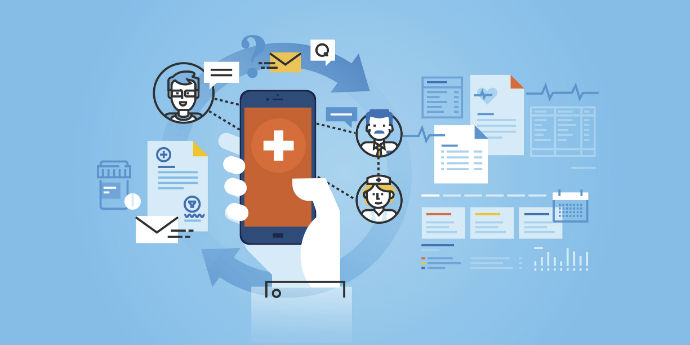In the ever-evolving landscape of healthcare, financial stability is vital for the success and sustainability of healthcare organizations. The healthcare revenue cycle, which involves the process of managing patient revenue from registration to payment, plays a critical role in maintaining the financial health of hospitals, clinics, and other healthcare facilities. However, revenue management in healthcare is becoming increasingly complex due to factors such as changing reimbursement models, regulatory requirements, and the need for advanced technology solutions.
In this article, we will explore the importance of advancing financial solutions in healthcare to unleash its revenue potential.
Understanding the Healthcare Revenue Cycle
The healthcare revenue cycle is a series of interconnected steps that begin when a patient schedules an appointment and ends when the provider receives full payment for services rendered. It encompasses various stages, including patient registration, insurance verification, coding, claims submission, payment processing, and denial management. Each stage requires precise coordination and accuracy to maximize revenue collection.
Streamlining Billing and Coding Processes
One crucial aspect of the revenue cycle is accurate billing and coding. Proper coding ensures that healthcare services are appropriately documented and billed, leading to timely and accurate reimbursement from insurance providers. Advanced coding solutions, such as computer-assisted coding (CAC) software, can significantly enhance coding accuracy and efficiency, reducing the risk of claim denials and revenue loss.
Leveraging Technology for Revenue Enhancement
Technology plays a pivotal role in optimizing the healthcare revenue cycle management. Electronic health record (EHR) systems, for instance, streamline patient data management, billing, and claims processing, leading to improved revenue capture and reduced administrative burdens. Furthermore, revenue cycle management (RCM) software and analytics tools provide valuable insights into the financial performance of healthcare organizations, enabling data-driven decision-making and better revenue optimization.
Maximizing Reimbursement and Revenue Capture
Reimbursement from payers is a significant source of revenue for healthcare providers. To maximize reimbursement, healthcare organizations must understand the intricacies of various payer contracts and negotiate favorable terms. Additionally, employing a robust revenue capture strategy ensures that all eligible services are accurately recorded and billed, preventing revenue leakage.
Addressing Denials and Revenue Leakage
Claim denials can have a significant impact on the financial health of healthcare organizations. The denial management process involves identifying the root causes of denials, resolving them promptly, and preventing future occurrences. By proactively addressing denials, healthcare providers can safeguard their revenue and maintain steady cash flow.
Enhancing Financial Analytics and Reporting
Data analytics and reporting are essential for gaining insights into the financial performance of healthcare organizations. Advanced analytics tools help identify trends, assess revenue cycle efficiency, and pinpoint areas for improvement. By leveraging financial data and analytics, healthcare leaders can make informed decisions to optimize revenue collection and overall financial performance.
Collaborating with Revenue Cycle Partners
As the healthcare revenue cycle becomes more complex, many healthcare organizations are turning to revenue cycle management companies and consultants for expertise and support. These partners can offer specialized knowledge and experience to enhance revenue cycle processes, address challenges, and implement best practices.
Ensuring Compliance and Mitigating Risks
Compliance with regulatory requirements is critical in healthcare revenue management. Non-compliance can lead to severe financial penalties and reputational damage. By staying updated with the latest regulations and implementing robust compliance measures, healthcare organizations can mitigate risks and safeguard their revenue.
Future Trends and Innovations in Healthcare Finance
The healthcare industry continues to evolve, and so do the financial solutions that support it. Several trends and innovations are shaping the future of revenue cycle management. For example, artificial intelligence (AI) and machine learning are being integrated into revenue cycle processes, enabling more accurate predictions of revenue patterns and proactive identification of potential issues.
Furthermore, telehealth and virtual care services have gained popularity, necessitating the development of new billing and reimbursement models. As healthcare organizations embrace value-based care, new payment models are being explored, focusing on outcomes and quality rather than volume.
Conclusion
Advancing financial solutions in healthcare is crucial for optimizing revenue potential and ensuring the long-term financial stability of healthcare organizations. By streamlining billing and coding processes, leveraging technology, maximizing reimbursement, addressing denials, and collaborating with revenue cycle partners, healthcare organizations can unlock their revenue potential. Embracing compliance, adopting innovative practices, and staying abreast of future trends is vital for maintaining financial health in the ever-changing healthcare landscape. By investing in advanced financial solutions, healthcare organizations can unleash their revenue potential and better serve their patients and communities.


